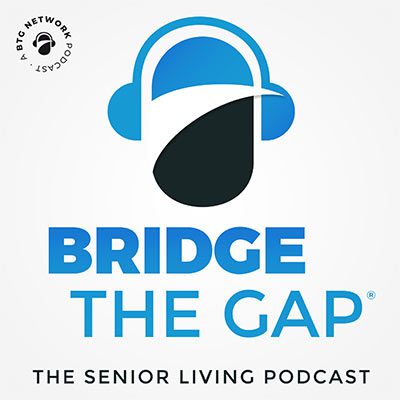The Crushing Cost of Conservative Retirement Planning
I spent 6 years in college studying mechanical engineering, and then 7 years working at an aerospace contractor where my colleagues and I designed, built, tested, and launched satellite-based telescope systems.

One of the features of all engineering design is the concept of “factors of safety.” Simply put, factors of safety are margins built into designs to ensure the end product can withstand physical loads beyond the expected maximum and still survive.
Some typical factors of safety might include:
- Material Properties: Variations in material properties due to manufacturing tolerances, defects, and degradation over time.
- Load Uncertainties: Variability in the loads experienced during operation, including aerodynamic forces, structural loads, and dynamic forces.
- Environmental Conditions: Exposure to different environmental conditions such as temperature extremes, corrosion, and radiation.
- Manufacturing Variations: Differences in dimensions, surface finish, and assembly tolerances due to manufacturing processes.
- Redundancy and Fail-Safe Design: Incorporating redundancy and fail-safe features to ensure continued operation in case of component failure.
- And many more…
These individual factors can be “weighted” as small as 10% up to as large as 300%. The factors are then multiplied together to find the total factor of safety. Depending on the end use, total factors of safety can be quite large (e.g. a total factor of 10 means a design that’s expected to see a 20-pound load must be designed to withstand 200 pounds!)

Space flight is unique. Rocket launches are brutal and rife with uncertainty. And if you get it wrong, a failure can be immensely expensive. Thus, factors of safety grow large. Simultaneously, every gram matters in space flight. It’s expensive to send mass into orbit. When a component is stronger than “needed” (e.g. a large factor of safety), it’s also heavier than needed. It’s challenging to maximize strength while minimizing mass.
I specifically recall a colleague venting after a big design review. His component had a ~15x factor of safety and the design review panel was hammering him on two fronts:
- First, his component did not survive at 15x loads. It only survived 13x loads, which was technically a failure.
- Second, his component was heavier than his allotted amount in the telescope mass budget.
“Why the hell do we need 15x factors of safety? It’s overkill!”
One of the lead engineers overheard him and calmly walked over.
“I hear you – but it’s a $500 million telescope system, and you get one shot to get it right.” He held up one finger. “One shot.”
You must protect yourself against even the smallest threats in such a high-risk endeavor. You need to take each “1 in 10,000” probability, assume they all happen simultaneously, and still survive. This results in a time-consuming and expensive design.
It’s important for aerospace. But should that level of conservatism apply to Retirement Planning?

From Rockets to Retirement
When a $100 million rocket costs $60 million to launch, and the total payload could range from $100 million to multiple billions (see: James Webb Space Telescope), you want to get it right. Layers of conservatism and huge factors of safety make sense.
Nothing against each of you and your unique lives, but…does the same level of conservatism make sense in Retirement planning? I know “retirement failure” is a scary outcome, but surely there are “right” and “wrong” levels of conservatism in retirement planning.
Let’s dive into some numbers and show an extra-conservative retirement plan’s true opportunity cost.
Explanation Through Example
I want to show you a “reasonable” set of conservative retirement assumptions. Well…at least they’re “reasonable” in some retirement circles.
But as I’ll show you, when you combine all of these conservative assumptions together—just like a telescope’s factor of safety—you end up with a “design” that is far more sturdy than needed. Each conservative factor multiplies with the others. They compound. The end product is significantly more conservative than any of the individual inputs.

We’ve covered the consequences in space flight. But in retirement, the cost of conservatism could result in decades of unnecessary extra work.
Note: what follows is a simple retirement analysis using a basic, free online calculator, assuming constant investment returns. It’s an illustration. True retirement planning is far more nuanced, using complicated software tools that simulate thousands of possible investment outcomes. Don’t stake your retirement on my simple illustration below.
Un-“Reasonable” Conservatism
Feel free to push back. I’m creating a strawman here. But I’ve seen each of the assumptions below in retirement analysis before.
- Social Security: “I’ll assume it will not be there for me.”
- Investment Returns: “Historically, a 60/40 portfolio might return 8-9% over long periods of time. To be safe, I’ll assume 6-7%. Let’s plant a flag and say 6.5%.”
- Expenses: “I know most people’s nominal spending goes down in retirement, but I want to be safe and assume mine will go up. I want to Travel a lot! I’m going to say it’ll go up by 25%.”
- Inflation: “…historically it’s been ~3% per year, but I’m going to assume 5% per year. Didn’t you see what happened in 2022 and 2023!?”
- Tax Rates: “…l’m going to assume Federal rates will increase, and thus my personal tax rates will increase. We’ll use a 20% effective tax rate.”
I ran a simple analysis with these assumptions for a 50-year old, with $1M in retirement accounts, earning $100,000 per year and spending $75,000 per year.
The results? They can “safely” retire at age 76.

Hyper-Realism
Let’s re-run that scenario but use as realistic numbers as possible. In other words, let’s bake zero conservatism into the assumptions.
- Social Security: It will be there, and based on their income history, will likely pay them $2500 per month as measured in today’s dollars.
- Investment Returns: Historically, a 60/40 portfolio has returned ~9% over long periods of time. We’ll use 9.0%.
- Expenses: They drop by about 10% in retirement.
- Inflation: Averages to 3% per year over the long run.
- Tax Rates: Despite the unknown of future Federal rates, the individual’s realized rate will be quite low due to smart retirement tax planning throughout their career. We’ll use a 7.5% effective tax rate.
Again, let’s run this analysis for a 50-year-old with $1M in retirement accounts, earning $100,000 per year, and spending $75,000 per year.
The result? They can retire in 4-6 years, around age 55.
This is a 21 year (!!!) difference from our overly conservative first analysis.

Meet in the Middle?
What’s the correct level of conservatism? To each their own, but I might start with assumptions such as:
- Social Security: It will be there. At worst, you should assume at least 80% of what is promised will be delivered to you. More reasoning on that is here.
- Investment Returns: Historically, a 60/40 portfolio has returned ~9% over long periods of time. Let’s use 8.0% for a bit of conservatism.
- Expenses: Let’s assume our subjects stays steady in retirement to what we’re spending now.
- Inflation: Historically is 3% per year over the long run. Let’s use 3.5%.
- Tax Rates: It’s simply too conservative to think your effective tax rate with increase or remain equal in retirement. That’s a result of very poor planning. We used 7.5% in our realistic example. Let’s use 10.0% here.
Once more, let’s run this analysis for a 50-year-old with $1M in retirement accounts, earning $100,000 per year, and spending $75,000 per year.
The result? They can retire in 8-10 years, around age 59.

The Cost of Conservatism
If you’re not careful, incorporating too much conservatism into your retirement plan could really add up—technically, it multiplies.
Next thing you know, you’ve convinced yourself to work decades longer than you actually need to.
My advice? Choose your numbers carefully, use a real financial planning software/simulator, and don’t be afraid to lean on a real financial planner to double-check your work.
Thank you for reading! If you enjoyed this article, join 8000+ subscribers who read my 2-minute weekly email, where I send you links to the smartest financial content I find online every week.
-Jesse
Want to learn more about The Best Interest’s back story? Read here.
Looking for a great personal Finance book, podcast, or other recommendation? Check out my favorites.
Was this post worth sharing? Click the buttons below to share!

























